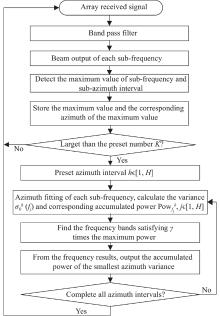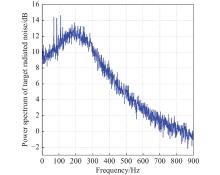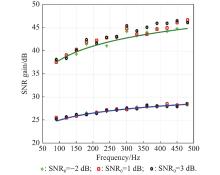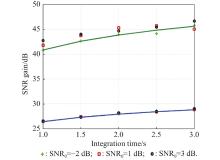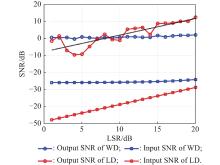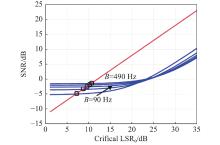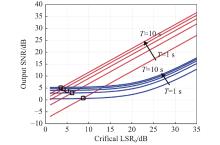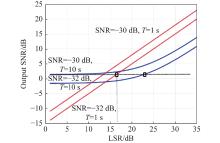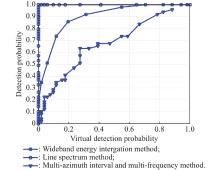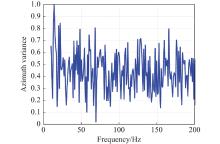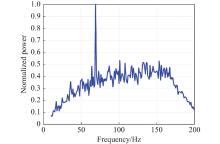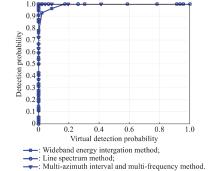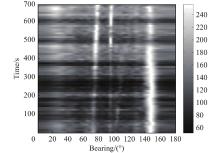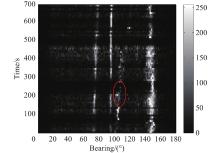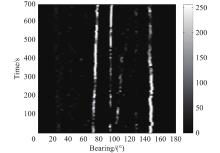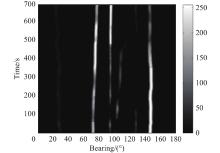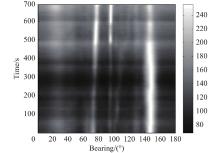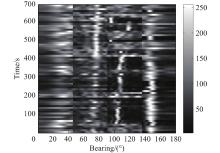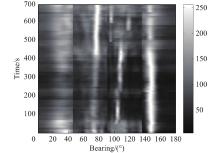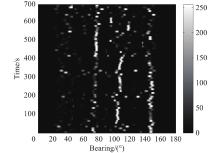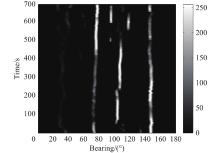| 1 |
HE C Y. Analysis and evaluation for transient radiated noise of underwater targets. Harbin, China: Harbin Engineering University, 2013. (in Chinese)
|
| 2 |
WANG D Z, SHANG E C. Underwater acoustics. Beijing: Science Press, 2013. (in Chinese)
|
| 3 |
BREKHOVSKIKH L, LYSANOV Y. Fundamentals of ocean acoustics. Berlin: Springer-Verlag, 2003.
|
| 4 |
SPENCE J H, FISCHER R W Requirements for reducing underwater noise from ships. IEEE Journal of Oceanic Engineering, 2017, 42 (2): 388- 398.
doi: 10.1109/JOE.2016.2578198
|
| 5 |
BARTEL T, HEROLD S, INFANTE et al. Active vibration reduction of ship propulsion systems. Proc. of the Joint Conference on Acoustics, 2018: 1−6.
|
| 6 |
OVALLE D, GARCIA-PELAEZ J Minimizing underwater noise generated by submarine maneuvering: an optimal control approach. IEEE Journal of Oceanic Engineering, 2016, 41 (2): 362- 372.
doi: 10.1109/JOE.2015.2444531
|
| 7 |
LI Q H, LI M, CHEN X H, et al. The interference characteristic of platform and towed body noise in shallow water for active/passive towed array sonar. Proc. of the International Conference and Exhibition on Underwater Acoustics, 2013: 213−220.
|
| 8 |
ALCANTARA E, ATLAS L, ABADI S Comparing frequency-difference beamforming and delay-and-sum beamforming as an estimator of direction-of-arrival. The Journal of the Acoustical Society of America, 2016, 140 (4): 30.
|
| 9 |
HUI J Research on passive detection parameter measurement technology based on single vector sensor. The Journal of the Acoustical Society of America, 2017, 142 (4): 2587.
|
| 10 |
HAMID U, QAMAR R A, WAQAS K. Performance comparison of time-domain and frequency-domain beamforming techniques for sensor array processing. Proc. of the International Conference on Applied Sciences & Technology, 2014: 379–385.
|
| 11 |
LIANG G L, HAN B, FAN Z Null broadening of near-field adaptive beam forming. Journal of Huazhong University of Science and Technology (Natural Science Edition), 2013, 41 (8): 34- 39.
|
| 12 |
GE S B, CHEN X H, SUN C Y The Research on the algorithm of inverse beam forming for interference suppression with good robust. Journal of Electronics & Information Technology, 2014, 37 (2): 380- 384.
|
| 13 |
LI Y, SUN C Y, WEI C H, et al Real-time cancellation of directional wideband interference in sonar. Applied Acoustics, 2008, 27 (4): 257- 263.
|
| 14 |
WILSON J H Applications of inverse beamforming theory. Journal of Acoustical Society of America, 1995, 98 (6): 3250- 3261.
doi: 10.1121/1.413814
|
| 15 |
DAI H Y, LI Y Z, LIU Y, et al Novel research on main-lobe jamming polarization suppression technology. Science China: Information Sciences, 2012, 42 (4): 460- 468.
|
| 16 |
YANG L. Studies on direction of arrival estimation of underwater targets and robust adaptive beam forming method. Xi’an, China: Northwestern Polytechnical University, 2017. (in Chinese)
|
| 17 |
LI H B, GUO Y D, GONG J, et al DOA estimation method for coherent weak signal sources in the presence of strong jamming. Modern Radar, 2012, 34 (9): 45- 49.
|
| 18 |
HUANG C. Study of strong coherent interference. Harbin, China: Harbin Engineering University, 2012. (in Chinese)
|
| 19 |
MARAGATHAM G, PRABU T M. Contrast enhancement by object based Histogram Equalization. Proc. of the World Congress on Information and Communication Technologies, 2011: 1118−1122.
|
| 20 |
BAO X Z, CHEN X H, LI Q H. New algorithm for background equalization of bearing/time digital sonar display. Proc. of the International Conference and Exhibition on Underwater Acoustics, 2013: 261−266.
|
| 21 |
LI Q H. Introduction to sonar signal processing. Beijing: Ocean Press, 1993. (in Chinese)
|
| 22 |
MA L, GULLIVER TA, ZHAO A B, et al Underwater broadband source detection using an acoustic vector sensor with an adaptive passive matched filter. Applied Acoustics, 2019, 148, 162- 174.
doi: 10.1016/j.apacoust.2018.12.023
|
| 23 |
ZHANG J, LI Y A, ALI W, et al Line spectrum enhancement of underwater acoustic signals using Kalman Filter. Journal of Marine Science and Application, 2020, 19 (1): 148- 154.
doi: 10.1007/s11804-020-00122-w
|
| 24 |
LUO X W, SHEN Z H A space-frequency joint detection and tracking method for line-spectrum components of underwater acoustic signals. Applied Acoustics, 2020, 172, 107609.
|
| 25 |
ZHENG E M, YU H B, CHEN X H, et al Line spectrum detection algorithm based on the phase feature of target radiated noise. Journal of Systems Engineering and Electronics, 2016, 27 (1): 72- 80.
|
| 26 |
SONG M Y, LI J Q Extraction of shaft frequency based on the DEMON line spectrum. The Journal of the Acoustical Society of America, 2018, 144 (3): 1944.
|
| 27 |
HEN X H, YU H B, SUN C Y. A method for detecting and recognizing underwater acoustic target signals. Chinese Patent 101738611A, 2010. (in Chinese)
|
| 28 |
CHEN X H, YU H B Research on detection of underwater acoustic signal with unknown frequency. Acta Armamentarii, 2012, 33 (4): 471- 475.
|
| 29 |
CHEN Y, WANG Z J, ZHU D Z A detecting method for line-spectrum target based on variance-of-frequency weight. Acta Acustica, 2010, 35 (1): 76- 80.
|
| 30 |
GUO X, GE F X, GUO L H Improved adaptive Kalman filtering and its application in acoustic maneuvering target tracking. Acta Acustica, 2011, 36 (6): 611- 618.
|
 ), Enming ZHENG2(
), Enming ZHENG2( ), Kaikai BAO3(
), Kaikai BAO3( )
)
